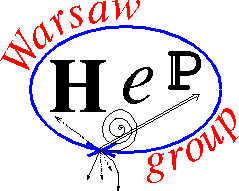SEMINARIUM FIZYKI WIELKICH ENERGII
Dnia 29 stycznia (piątek) o godzinie 10:15, odbędzie się seminarium, na którym zostanie wygłoszony referat pt.:
„Towards spin physics from Lattice QCD”
Referuje: Prof. UAM dr hab. Krzysztof Cichy (UAM)
In this talk, we will present recent directions in lattice QCD computations of nucleon structure, in particular for spin-dependent observables. We will provide a brief non-technical introduction to lattice QCD in general and to lattice methods that give access to the relevant physical quantities. Then, we will review selected results for spin-dependent parton distribution functions (PDFs) and generalized parton distributions (GPDs), including both their moments and their x-dependence. Finally, we will show the nucleon spin decomposition from the lattice in terms of contributions from valence/sea quarks and gluons.
Serdecznie zapraszamy
dr hab. Katarzyna Grzelak
prof. dr hab. Jan Królikowski
prof. dr hab. Aleksander Filip Żarnecki
The meeting will take place on zoom.us platform.
Join Zoom Meeting
https://us02web.zoom.us/j/
Meeting ID: 845 1609 6743
Passcode: HEP_UW

